Top Data Labeling Tools to Streamline Your Machine Learning Projects
Introduction
Data labeling is a crucial step in the machine learning pipeline, as it involves annotating data to train algorithms effectively. With the growing demand for high-quality labeled data, numerous tools have emerged to simplify and automate this process. Here, we explore some of the best data labeling tools available today.
What are Data Labeling Tools?
Data labeling tools are software applications designed to assist in the annotation of datasets. These tools provide various functionalities, such as image, text, and video labeling, to help create accurate training data for machine learning models. They often include features like automated labeling, collaborative annotation, and quality control to ensure the highest accuracy and efficiency.
Why Use Data Labeling Tools?
Enhanced Accuracy
Using data labeling tools ensures that annotations are consistent and accurate, reducing the chances of errors that could negatively impact the performance of machine learning models.
Improved Efficiency
These tools often come with automation features that speed up the labeling process, allowing data scientists and machine learning engineers to focus on more complex tasks.
Scalability
Data labeling tools are designed to handle large volumes of data, making it easier to scale up projects without compromising on quality.
Collaboration
Many data labeling tools offer collaborative features, enabling teams to work together seamlessly and maintain consistency across annotations.
Use Cases for Data Labeling Tools
Autonomous Vehicles
Data labeling tools are extensively used in the development of autonomous vehicles to annotate images and videos for object detection, lane detection, and other critical tasks.
Healthcare
In the healthcare industry, data labeling tools are employed to annotate medical images, such as X-rays and MRIs, aiding in the development of diagnostic algorithms.
Natural Language Processing
For NLP tasks, data labeling tools are used to annotate text data, including sentiment analysis, entity recognition, and language translation.
E-commerce
E-commerce platforms utilize data labeling tools to categorize products, tag images, and enhance search functionalities, improving the overall user experience.
Best Data Labeling Tools
- Abaka AI
Abaka AI is a comprehensive data labeling platform that offers a range of features, including automated annotation, quality control, and collaboration tools. It supports various data types, making it suitable for diverse machine learning projects.
- Labelbox
Labelbox provides a robust data labeling solution with features like model-assisted labeling, workflow automation, and performance analytics. It is designed to enhance productivity and ensure high-quality annotations.
- Scale AI
Scale AI specializes in providing high-quality labeled data through a combination of human annotators and machine learning models. It offers tools for image, text, and video annotation, catering to various industries.
- Amazon SageMaker Ground Truth
Amazon SageMaker Ground Truth is a fully managed data labeling service that uses machine learning to improve the accuracy and efficiency of annotations. It integrates seamlessly with other AWS services, making it a powerful tool for large-scale projects.
- V7 Darwin
V7 Darwin is an advanced data labeling platform that offers features like automated labeling, collaborative annotation, and version control. It supports a wide range of data types and is known for its user-friendly interface.
- Prodigy
Prodigy is a versatile data labeling tool that combines active learning with human-in-the-loop annotation. It is highly customizable and supports various data types, including text, images, and videos.
- Dataloop
Dataloop provides a comprehensive data labeling solution with features like automated workflows, quality control, and collaboration tools. It is designed to handle large-scale projects and ensure high-quality annotations.
- Appen
Appen offers a range of data labeling services, including image, text, and video annotation. It combines human annotators with machine learning models to deliver accurate and efficient annotations.
- Hive Data
Hive Data provides a suite of data labeling tools that support image, text, and video annotation. It offers features like automated labeling, quality control, and collaboration tools to enhance productivity.
- Alegion
Alegion offers a robust data labeling platform with features like automated workflows, quality control, and collaborative annotation. It supports various data types and is designed to handle large-scale projects.
Conclusion
Data labeling tools are essential for creating high-quality training data for machine learning models. By leveraging advanced features like automation, collaboration, and quality control, these tools can significantly enhance the accuracy and efficiency of the labeling process. Whether you are working on autonomous vehicles, healthcare, NLP, or e-commerce, the right data labeling tool can make a substantial difference in the success of your project.
FAQ
- What is data labeling? Data labeling is the process of annotating data to create training datasets for machine learning models.
- Why is data labeling important? Accurate data labeling is crucial for training machine learning models effectively, as it directly impacts their performance.
- What are some common use cases for data labeling tools? Common use cases include autonomous vehicles, healthcare, natural language processing, and e-commerce.
- How do data labeling tools improve efficiency? Data labeling tools often include automation features that speed up the annotation process, allowing for quicker project completion.
- Can data labeling tools handle large-scale projects? Yes, many data labeling tools are designed to handle large volumes of data, making them suitable for large-scale projects.
- What features should I look for in a data labeling tool? Key features to look for include automation, collaboration, quality control, and support for various data types.
- Are there any free data labeling tools available? Some data labeling tools offer free versions or trials, but most advanced features are available in paid plans.
- How do data labeling tools ensure accuracy? These tools often include quality control features and use a combination of human annotators and machine learning models to ensure accurate annotations.
